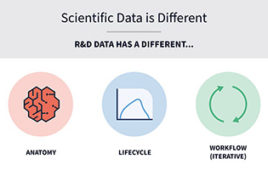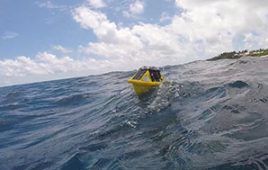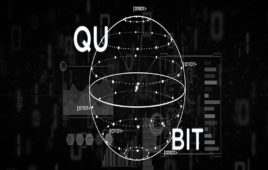Statistics, Informatics Professors to Collaborate on Army Research Project
Two Indiana University Rudy Professors have been named as collaborators in a $35.5 million Army Research Laboratory project expected to span 10 years and involve 10 additional universities and corporations. As lead partner in a project devoted to the study of social and cognitive networks, Rensselaer Polytechnic Institute will create a new center as part of the Army Research Laboratory’s recently formed Collaborative Technology Alliance for Network Science. The center will link top social scientists and statisticians like Stanley Wasserman, chair of the IU Department of Statistics, and physicists and computer scientists like Alessandro Vespignani, IU professor in the School of Informatics and Computing, in addition to neuroscientists, engineers and cognitive scientists. Its goal is to uncover, model, understand and foresee the complex social interactions that take place in today’s society.
The Army Research Laboratory named Rensselaer, IBM, Northeastern University and City University of New York as corporate and academic partners on the project, and IU is included among fellow collaborators Harvard University, Massachusetts Institute of Technology, New York University, Northwestern University, the University of Notre Dame and the University of Maryland.
Vespignani and Wasserman will receive $850,000 over five years and expect to receive equivalent funding for an additional five years as their work proceeds. Their work will focus on dynamic processes in networks and also on the study of organizational networks and how knowledge, particularly in the Army, is spread from peer to peer in the modern military. One objective for the pair will be working toward an understanding of how the properties of multi-scale networks affect diffusion and spreading behavior in biological and social contagion phenomena at individual and population levels.
Three other areas of focus for the new Rensselaer-based Center for Social and Cognitive Networks are the study of adversary networks, the examination of trust in social networks, and finally, the impacts of human error in social networks.
“We’ll ask, ‘When is a community active and when is it inactive?’ in trying to understand the dynamics within networks,” Wasserman said. “One aim may be to figure out how mobility patterns impact social interactions.”
Modern societies are supported by organically evolving network structures that contribute to the transport and storage of entities like materials, energy, information and people across vast time and space, they pointed out. As technological advances provide tools to better monitor social interactions and influence social networks by providing novel ways for humans to interact, researchers want to understand both the human interactions and the underlying technological infrastructure they utilize. To do this, Vespignani and Wasserman will combine theoretical and computational tools from the disciplines of sociology, political science, computer science, mathematics, statistics and physics.
“This grant is not like most grants that we get where you spell out in detail and in advance what you expect to be doing,” Vespignani said. “There are so many teams and interactions that new research directions and discoveries may emerge at any moment. In this case, they may look at our results after a year and determine that our work goes in one direction or another.”




